
Scale a global SEO strategy with limited resources and buy-in!
Whether you saw my talk or are catching up after the event – thanks for stopping by! You can skip to my slides and the recording (via a link) below, or progress to the write-up, which has some additional points and links to useful resources.
The slides
Link to slides: https://speakerdeck.com/sukhsingh/scale-a-global-seo-strategy-with-limited-resources-and-buy-in
The video
Link to video: https://youtu.be/p607yujdE9w?si=t2JlOlrQG6UGrVgQ
The write-up
So, you are going global? Great! Whether you have existing global website users to better serve or want to gain new global users, this is a great idea.
Stat-ahoy:
“57% of online shoppers said that they shop internationally (2022)”
Source: PayPal
In my 15+ years of working on SEO campaigns with organisations, mostly on the agency-side, I have run into the following issues quite often, which hindered our progress in implementing international SEO strategies:
- Limited budgets within global teams
- Limited people power to implement work internally
- And in some cases, limited buy-in (at all levels)
Through a lot of trial and error, I found ways to mitigate these issues and implement global strategies successfully.
Research and planning
Define global targets
With all strategies, defining KPIs is essential. Not just measure successes and show an ROI, but in our case, to help encourage buy-in from the start. By setting KPIs that align with global business targets, we can get support from top-level stake-holders like CEO’s and global marketing managers, then individual team leaders/dept. heads later.
SEO forecasting is very useful in creating these KPIs. By working out the shortfall of leads/revenue we need to fill with SEO first, we can then estimate how much additional traffic we will need to meet this figure.
In brief, we can do this by:
- Finding a sample of relevant keywords for one or more regions and note their search volumes
- Using an estimated average CTR if you get these ranking in the top 10 of Google (use this guide for figures)
- Using your current website conversion rate
- If you are Ecommerce site find your average order value (AOV), and include transactions instead of conversions and multiply by AOV
- Using a spreadsheet, add all of this data and calculate the final conversions/transactions and revenue as a result of hitting page one for these keywords
This is a brief explanation of a more detailed task, but it’s doable! You can use a tools like SEOmonitor to forecast this for you (this guide explains how they do it) and see this amazing conference talk on the methodology of forecasting for SEO by Hannah Rogers.
Example macro KPI examples:
- +15% revenue / conversions by Q4
Example micro KPI examples:
- +20% keyword visibility by Q4
- +5% domain authority by Q4
- +10% blog engagement by Q4
Check your current performance
Website traffic by country (total and organic traffic)

You want to find where users are coming from and how they are engaging and converting currently, so you can see the performance gaps and note which regions are already performing well and would thus provide us a quick-win in the short term if we improved certain things, like on-page SEO/localised keywords, content in general, or technical SEO, for example.
Keyword topic visibility
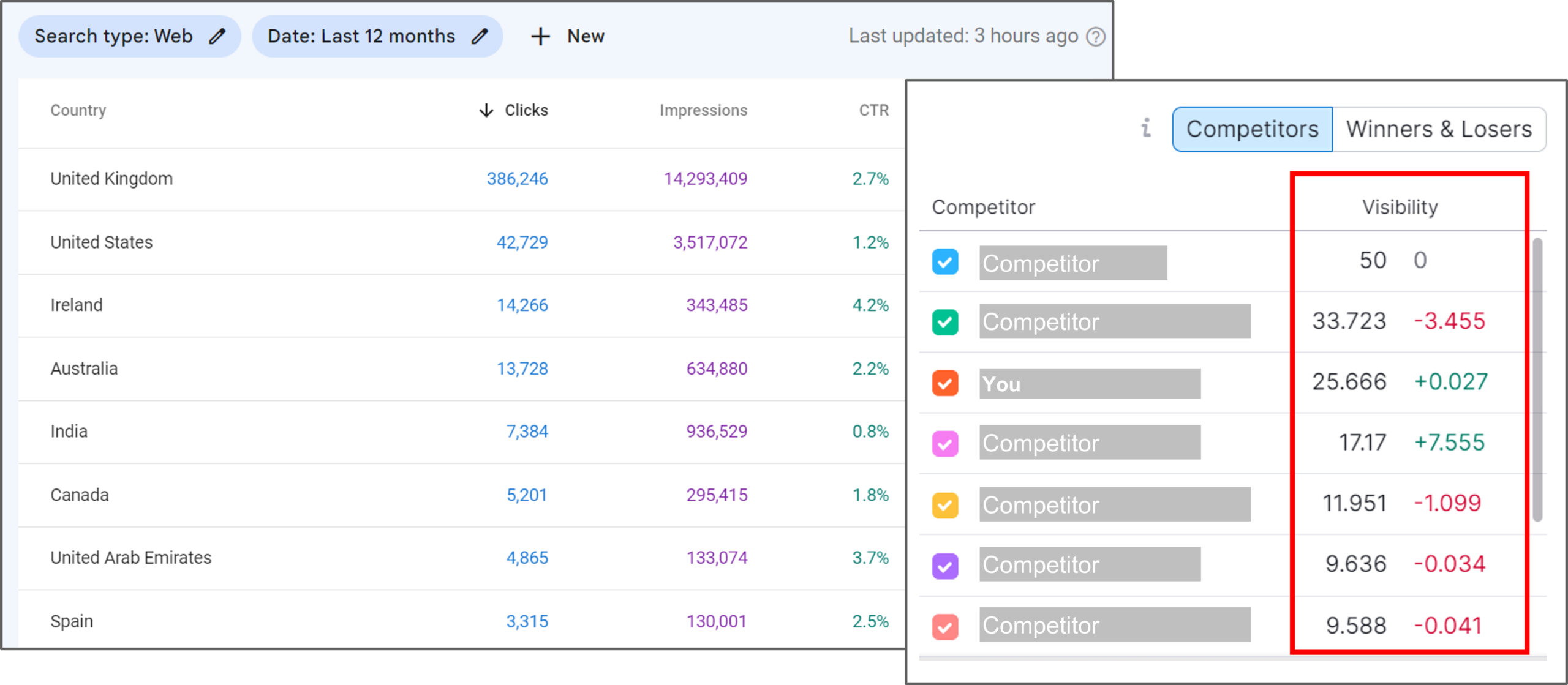
Let’s see how strong you rank for brand and non-brand keyword topics currently in Google Search Console and keyword rank trackers like Semrush or SEOmonitor. Track and pull data from competitors who ideally have prominence in the regions you want to target.
Domain ‘rating’ or ‘authority’

This is one of my favourite metrics for gauging my overall SEO authority in general, relative to competitors from tools like Ahrefs, Semrush and Moz. Again, use competitors with prominence in the respective regions you want to target.
A good rule of thumb I use when seeing my domain authority relative to competitors is:
- If my authority is higher than theirs = focus more on on-page and technical SEO
- If my authority is relatively lower than theirs = focus on link building and earning, then on-page and technical SEO
Global search engine market shares
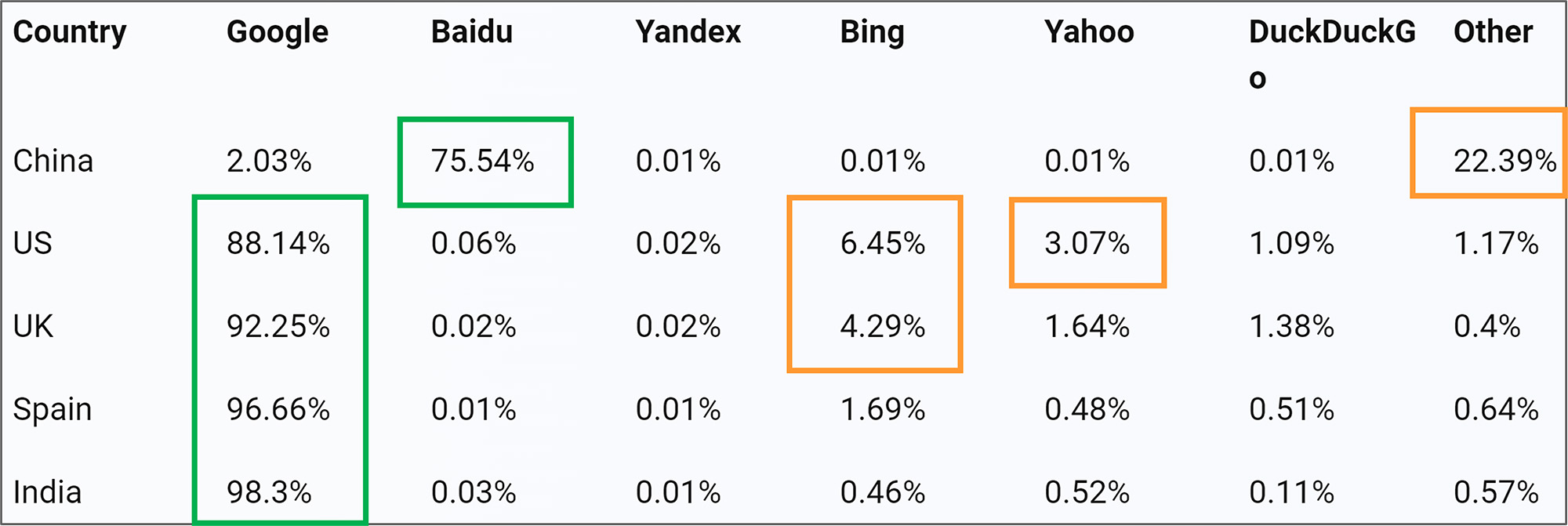
Checking which search engines have most prominence in your target regions. We all know Google dominates most of the global market share, followed by Bing, Yahoo and so on. However, you may be surprised at how much market share each has in specific regions, and of course, see outliers like China and Russia that have Baidu and Yandex dominate those regions, respectively.
Native languages vs target regions
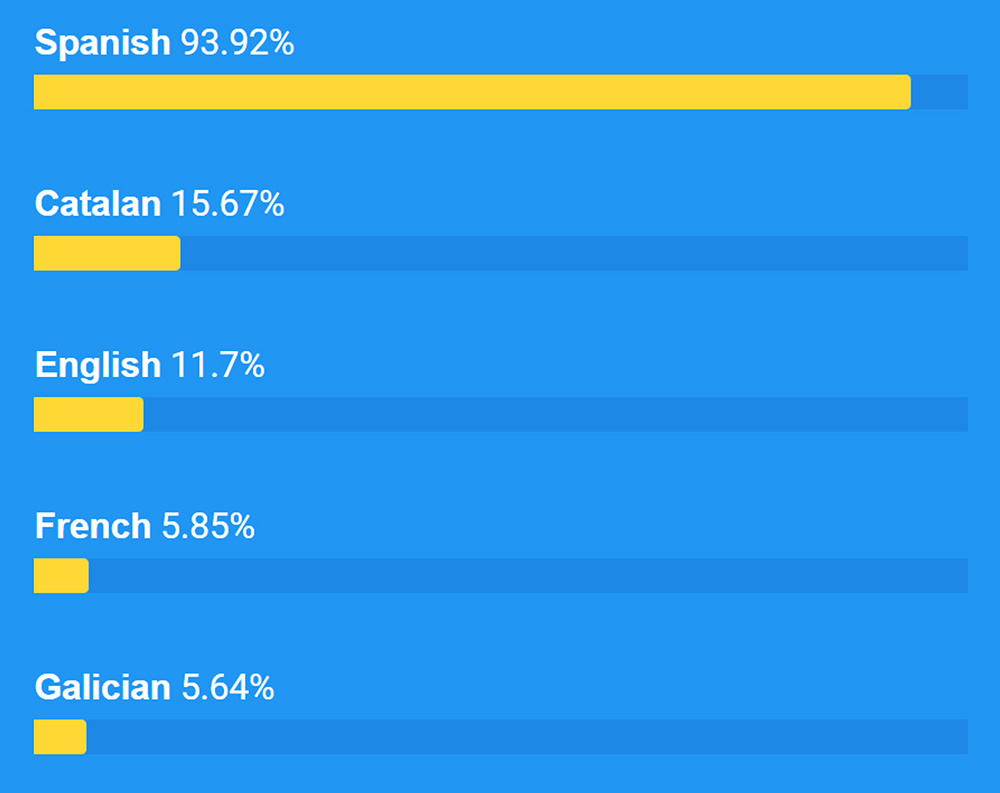
In the example above with Spain, you can see languages other than Spanish which should be considered. Think about all of the users in your target regions, cross-reference market data with your user’s browser language data in Google Analytics, and make a judgment call on whether to cater to all or some of them.
Cross-reference market data with Analytics user data too
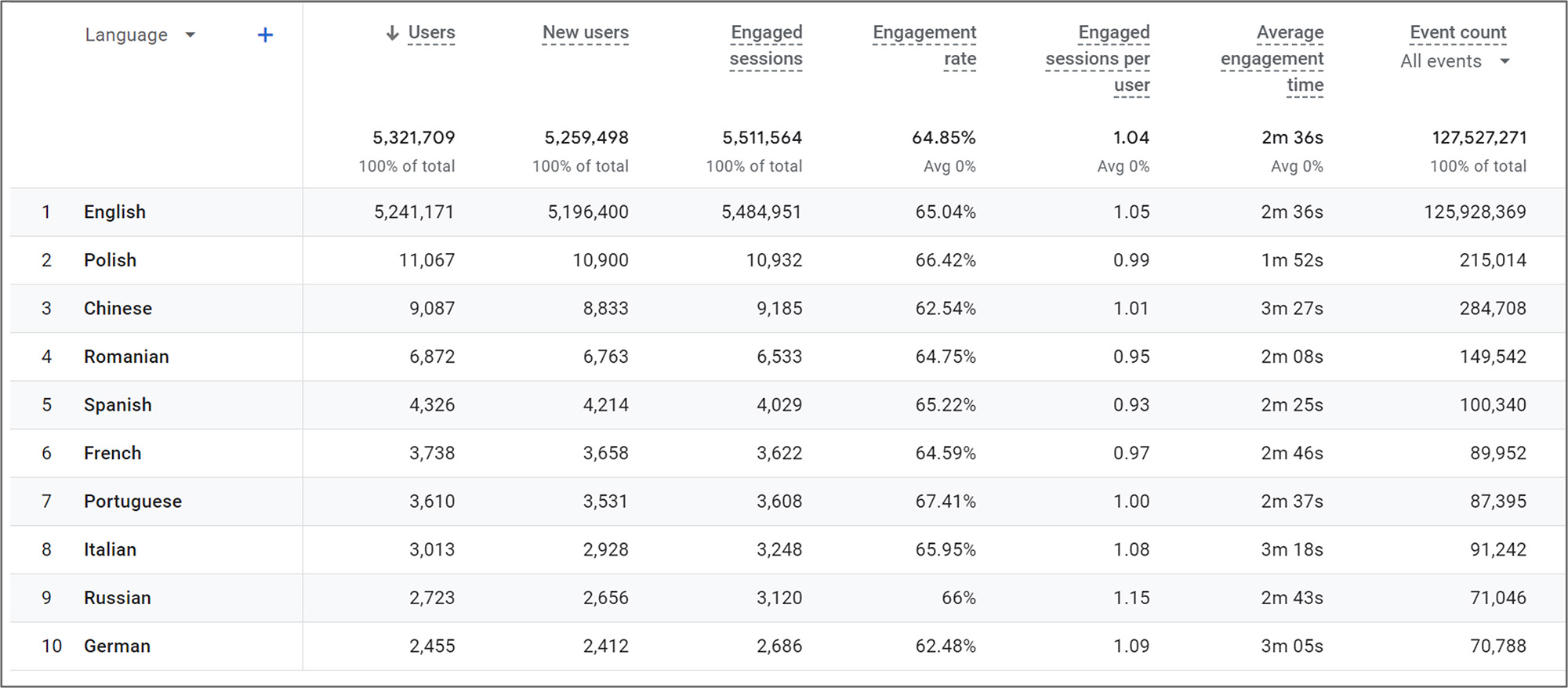
Global social media use
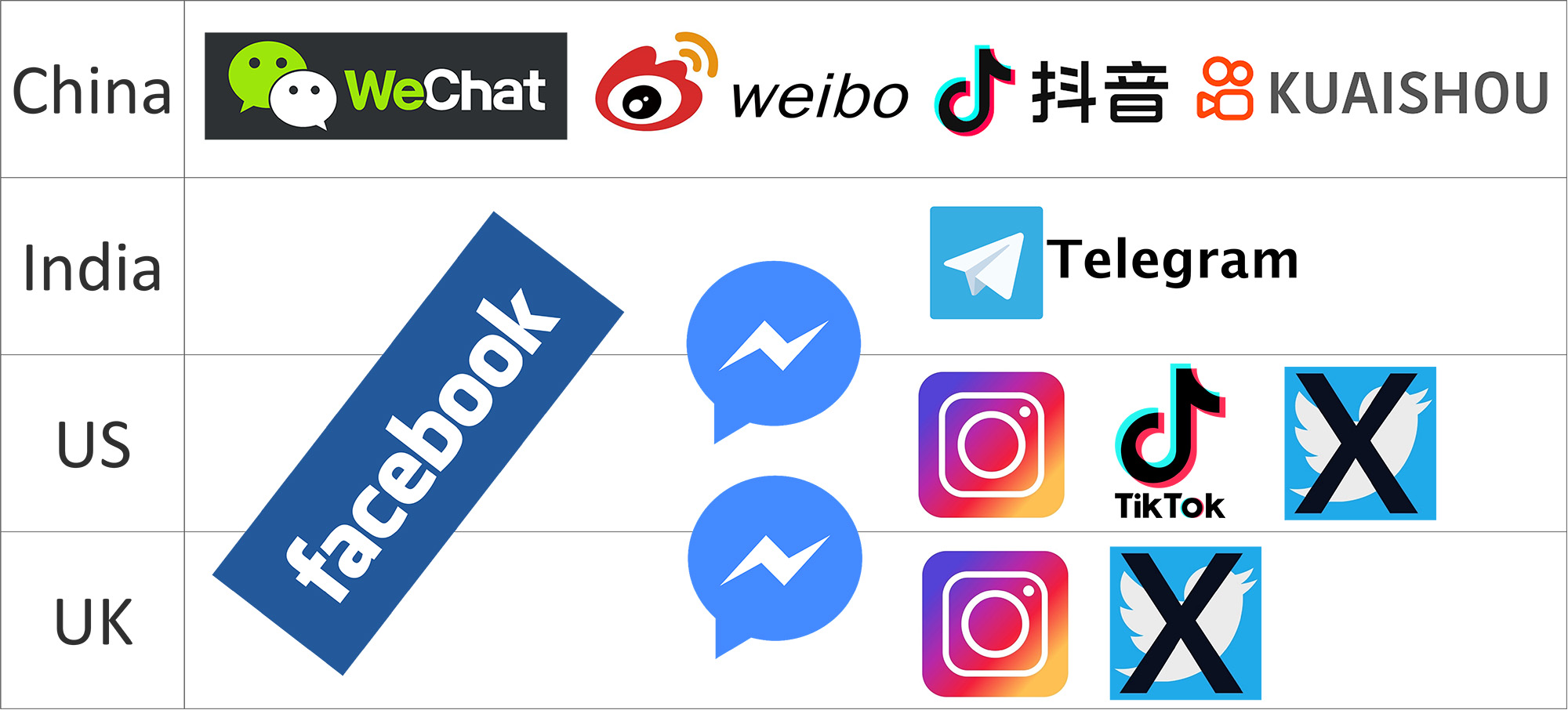
This is useful, as we all know SEO isn’t done in silo and that we need these platforms for content marketing and link earning. We also need this information to confirm which alternative ways your users may like to enquire. So, check which platforms are prominent in each target region.
How users enquire globally

Check how users primarily like to enquire in your target regions – mostly applicable to lead generation projects. You would be surprised at which platforms/methods certain regional users prefer. A couple of my clients who target India said that their users preferred to click to call a mobile number, so this was an anecdotal bit of feedback that I included.
Chat to your teams!

Speaking to local teams who have that KEY local and industry knowledge, and customer experience, has been invaluable! Market research and data is great, but in my experience you need to cross-reference it with first-hand data.
You can also get great E.E.A.T. content ideas too (Experience, Expertise, Authority and Trust) from technical, sales, and customer service teams! And, convince them to become authors or specialist topics, thus contributing to your E.E.A.T. directly (even if you help them write the content!).
Prioritise! By resources vs target regions
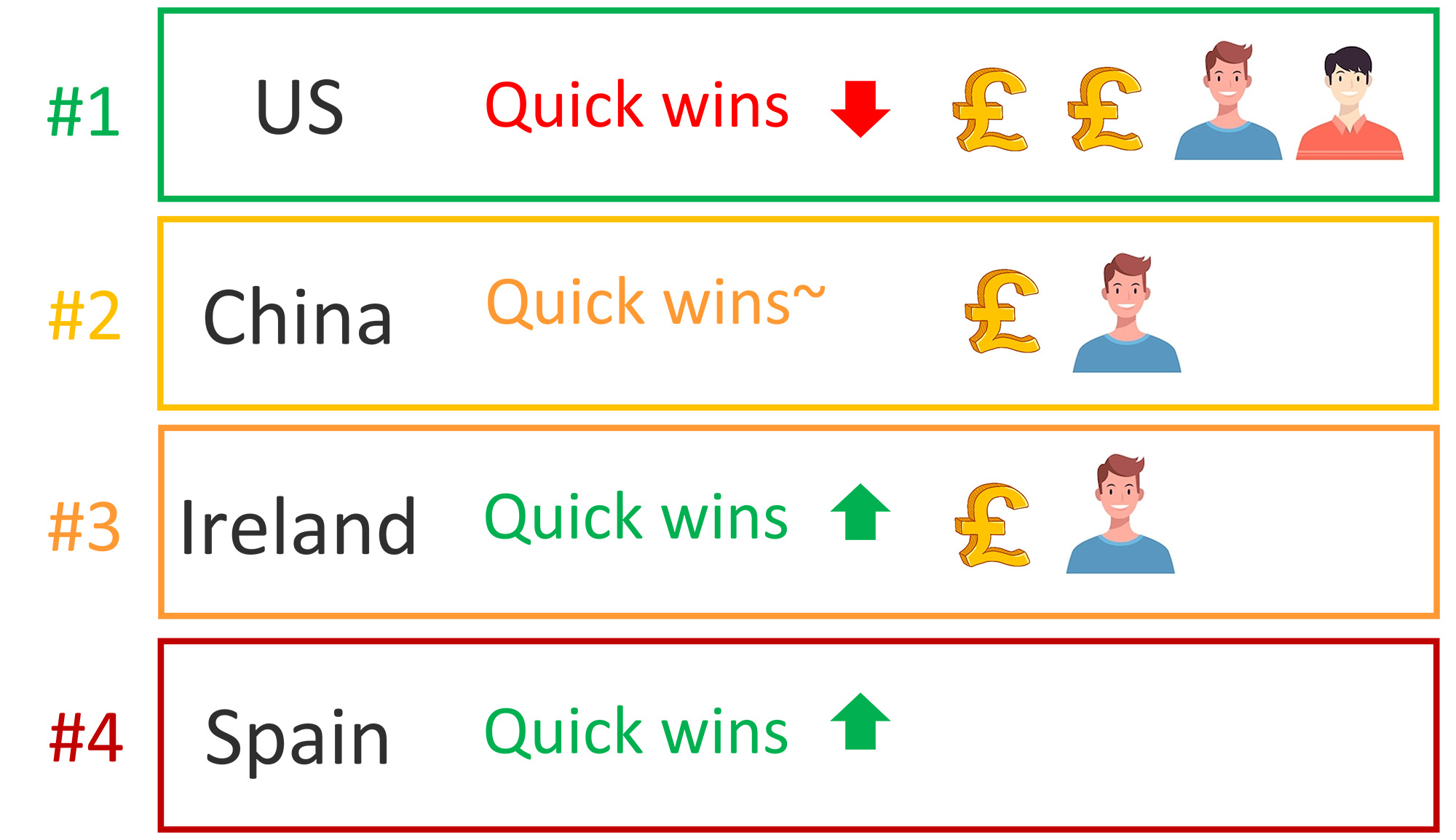
The purpose of the research and planning exercise is to then prioritise where we place our budget and people resources. So, we want to consider:
- The largest markets (website user populations, website user traffic)
- Current performance for quick wins (brand/non-brand keyword visibility, traffic, domain rating/authority, engagement, conversions)
- Current budgets and people resources available per region
In my example above, I prioritised the largest market for my industry niche (US), and ignored the lack of immediate quick wins, and then prioritised the rest, where quick wins was more of a factor and the tie-breaker was available resources.
Prioritise! By ranking factors vs budgets and expertise

Think about what you can afford do vs their relative impact to your SEO performance (Backlink do an annual review of top ranking of ranking factors). Place the other tasks on the back-burner to complete once the priority tasks are done, as its good to hit as many ranking factors as possible eventually.
But, think about what you can actually do well?
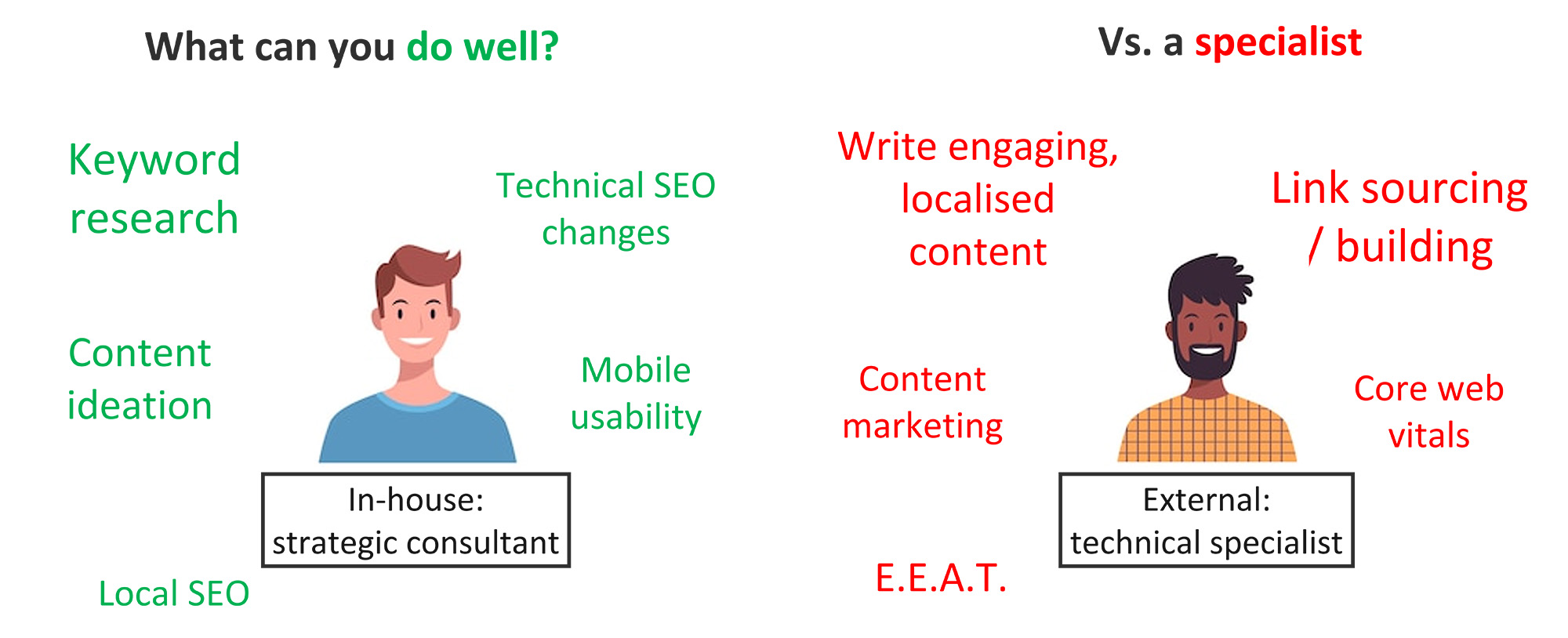
Consider which tasks you can actually do well. I have made the mistake in the past, based on low budgets, that I can just take on certain tasks I am just ‘OK’ at, but later realised its not as easy as it sounded! So, carefully and honestly consider which tasks you can do, because your competitors may be doing them way better than you are.
Delivery!
Site structure and geo-targeting

This decision depends on what your current set-up is and what its current domain rating or authority (DA) is. For example, if you have a .com domain and it has a DA of 50/100, and you want to expand and rank relatively quickly – I’d recommend the sub-folder approach, as your existing domain rating will pass-onto the new folders via internal links.
If you can wait a bit to rank and have the budget, consider separate CCTLDs, as these are the stronger geo-targeting signals to search engines, and a strong trust signal to users.
Sub-domains are the least favourite choice of mine personally, as they are similar to sub-folders but seen technically as a separate domain. So, search engines may need a month or two to determine that this sub-domain belongs to the root domain topic (via internal links). Sub-domains also get abused by established domains that sell them to webmasters who host content that have no topical relevance to the root domain,, but temporarily benefit with rankings. This is temporary as Google covered this issues in their latest Helpful Content Update.
Potential website migration project!
If you are making changes to content and/or URLs, you should perform a content value audit to see if its currently performing well (ranking, driving traffic, engagement, conversions/sales), and decide whether to actually kill content or consolidate/re-vamp, and or migrate and redirect.
I did a talk on this in 2022 that might help you consider a process for this
Technical SEO: Prioritise quick-wins!
Combine your geo-targeting tasks with your general technical SEO tasks and prioritise the issues you can implement within your budget, or by yourself first. These are examples of tasks I typically end up with from technical SEO audits with suggested approaches:
1. Implementing hreflang tags: super important to direct Google to which languages and regions your content applies. And, you can save some time/money doing this.
- Consider using AI, like ChatGPT (via Bing Chat with a Chrome add-on as its better!) or Aleyda Solis’ online tool to generate the tags yourself
- Or use free WP plugins like POLYANG
2. Core web vitals: Typically, JavaScript and CSS issues are at the top, and usually image optimisation is a close second.
- Optimise images for free online using Pixlr or Photopea
- Use free versions of WP plugins like Smushit
- For JavaScript or CSS issues, consider plugins like WP Rocket
3. Duplicate content: usually a common issues reported in Google Search Console’s Indexing section, or crawlers like OnCrawl.
- Fix yourself using customisable canonical tags in most CMS’s, or by using plugins like Yoast SEO
- Or, re-write content yourself, where you want both pages to rank for unique content
4. Indexation issues: reported in Search Console or crawling tools (like Screaming Frog or OnCrawl), such as hard and soft 404s, thin content, redirect chains and so on, can be resolved by yourself.
- Use one-step 301 redirects to relevant locations, re-instate 404 pages or fix internal broken links, or redirect them to relevant locations
- Fill content gaps where needed
5. SERP optimisation: where you may see the need to fix long, short, missing, duplicated, or unengaging title and meta descriptions tags (the latter point referring to seeing low CTR in Google Search Console).
- Re-write title and meta tags to the correct character limits, to read in an engaging way, and depending on the search intent, encourage a call to action
Keywords and localisation
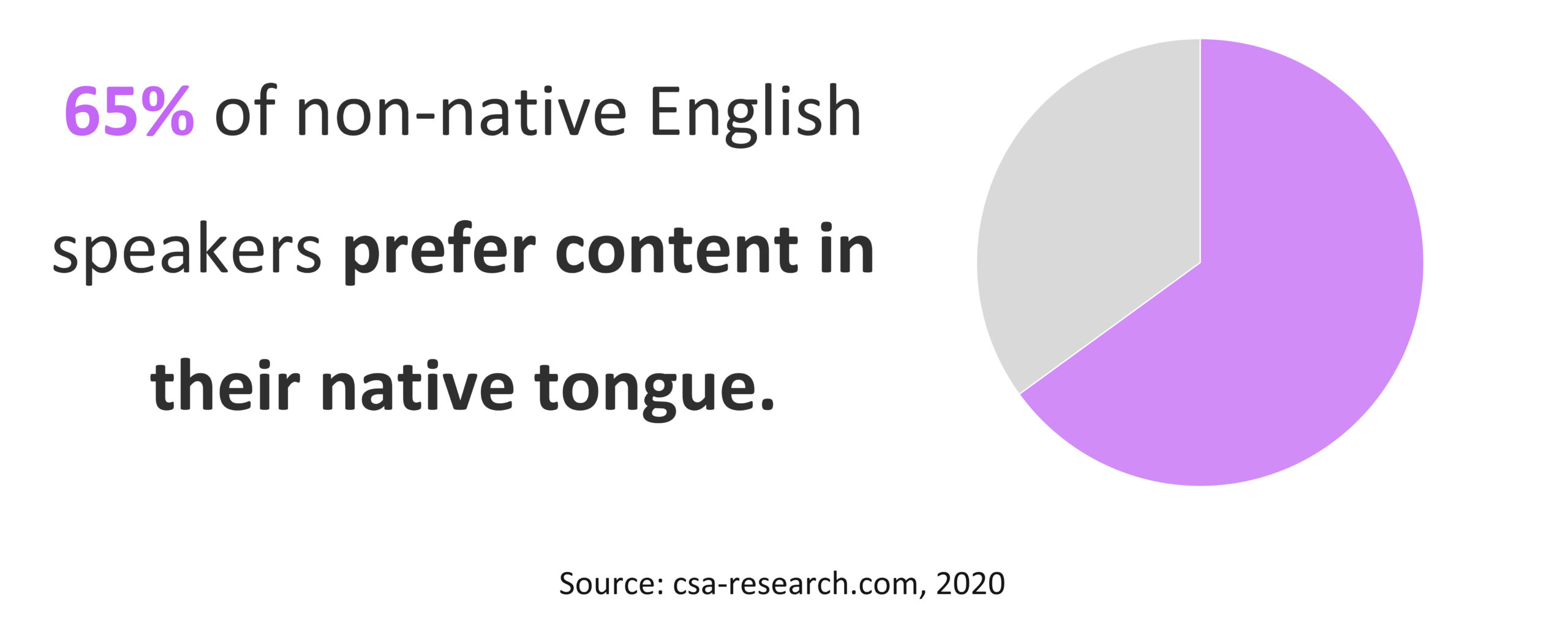
Re-researching keywords
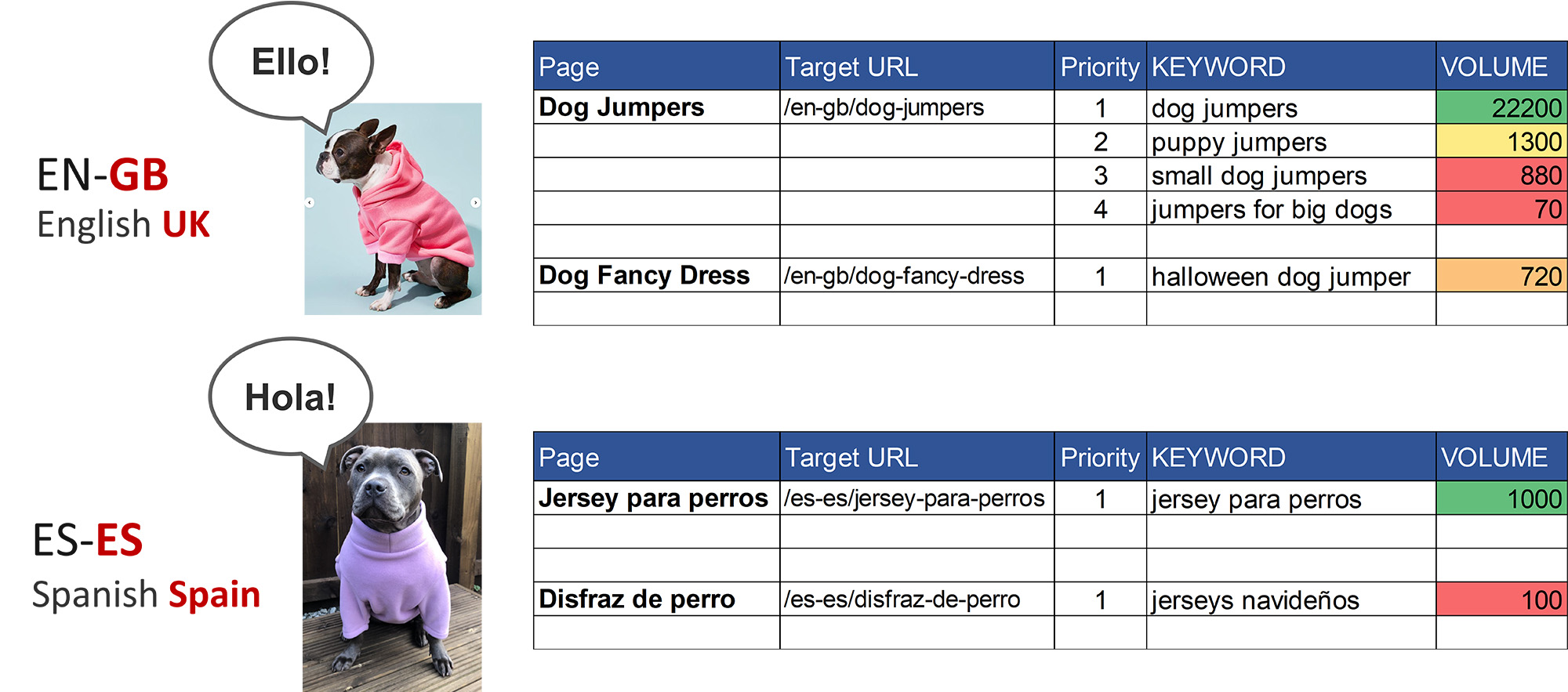
It’s important to choose the core keyword topics first (services/product ranges) that are relevant to multiple regions, then re-research them. I chose this term over localisation because it leaves no room for confusion on whether to translate or trans-create them. You may end up with fewer or more keywords than other regions, but this doesn’t matter because they will be relevant to that local audience, and therefore drive more qualified traffic and on-site engagement.
Trans-create your core website content

Using your local keywords, ideally hire local writers who know SEO (ideally), and get them to incorporate their local cultural knowledge into the content, as if they were writing it from scratch and focussing on one region and not as part of a global project. Its important to find writers with local knowledge, as cultural references can make or break a local user journey and damage a first website visit impression.
Local SEO:
This is a great way to bolster geo-targeting. Confirm the local NAP details (Name, Address, Phone number, emails, social media links, company bios), as these local details will allow you to create country-specific local business profiles in Google Maps, Bing Maps, Apple Maps etc. This will help with geo-targeting also. Trans-create company bios per region.
NAP optimisation
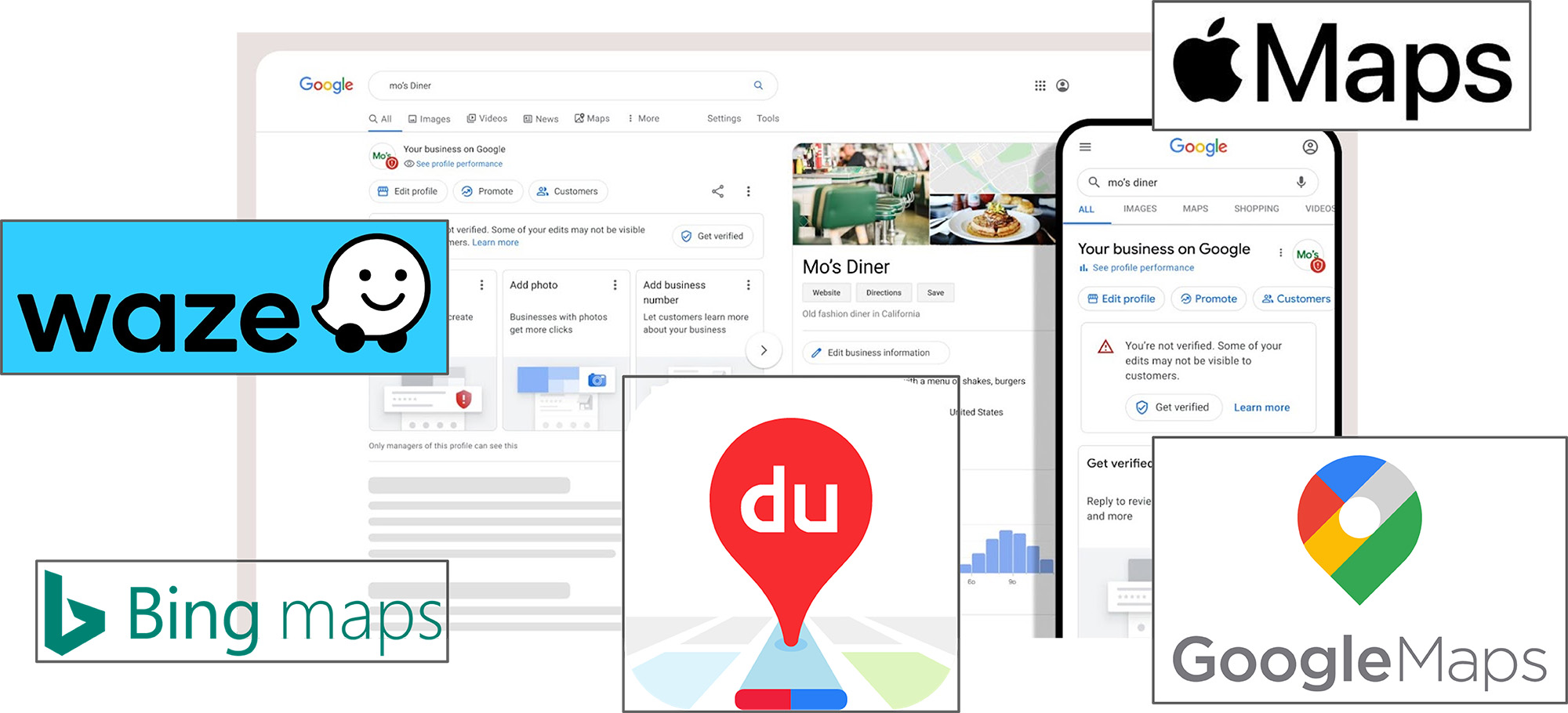
Confirm which local map/navigation platforms are relevant and prominent in each target region, and using your NAP details, create profiles and place your local keywords in trans-created company bio’s and any other places.
Citation and link building
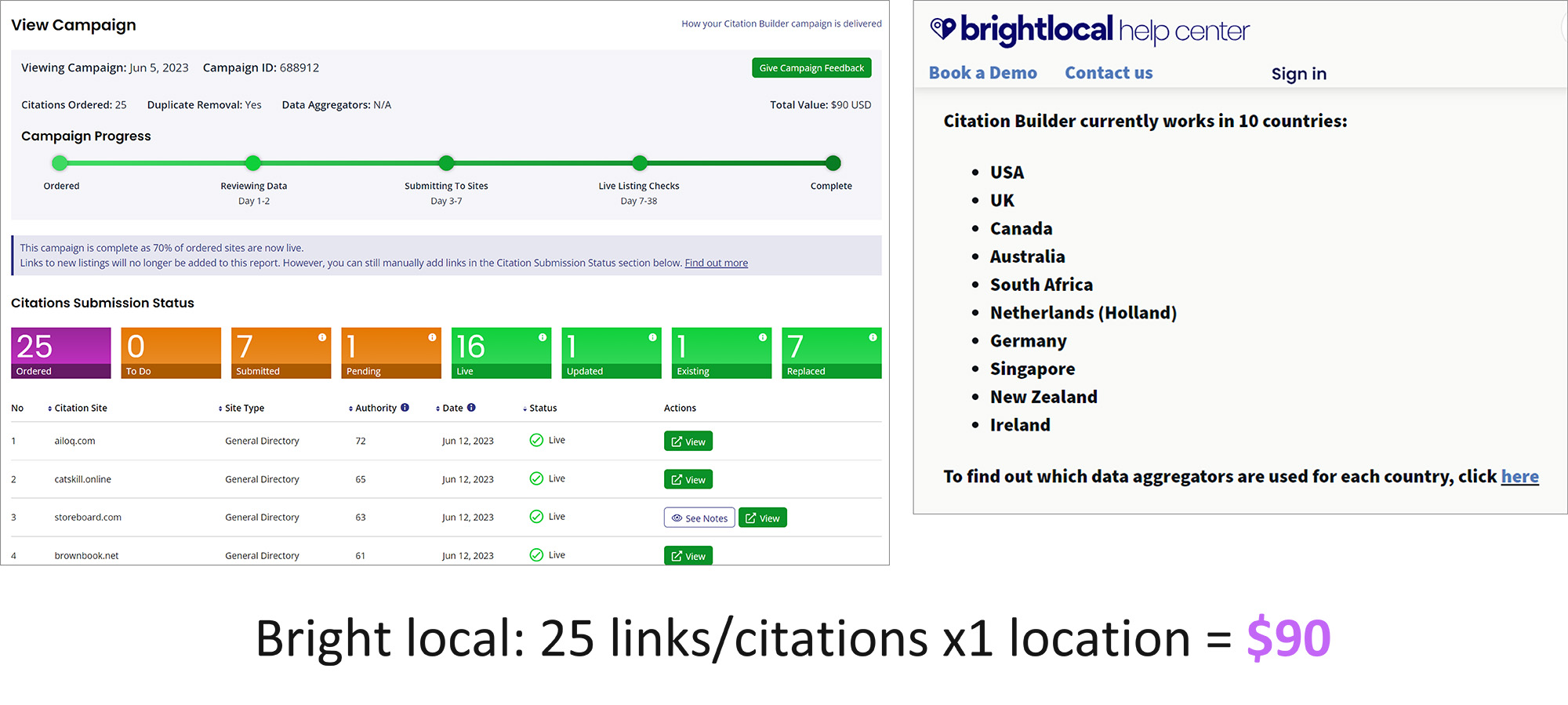
Consider using services like Bright Local or White Spark, if they cater to your target regions, to scale your NAP alignment and citation/link building activity. This can give you a quick win for local SEO. If your location isn’t covered, find alternative white-hat local websites manually and follow a manual process of creating or correcting existing listings.
Link building quick wins
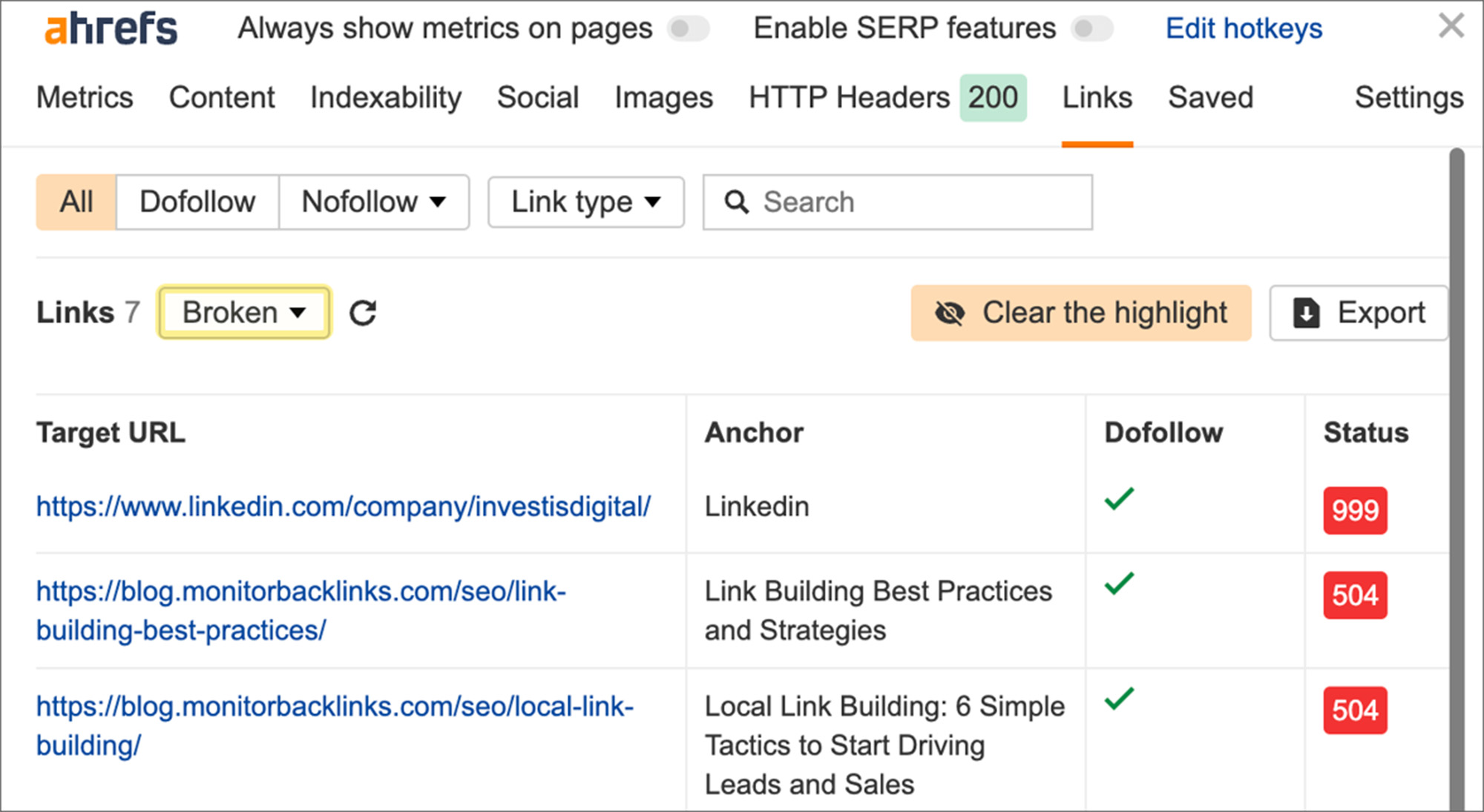
Before you go into the more strategic and time-intensive targeted link earning and building, leveraging great content. You can do the following tasks to gain some relatively quick wins:
1. Broken link building and link reclamation (for you and your competitors)
By entering your URL into Ahrefs (or use a free backlink checker and crawl destination URLs with a free crawler), you can filter by status 404 (broken links) to see which links to go pages that no longer exist. You can then either redirect those dead links to relevant and engaging pages, or re-create those pages.
You can do the same for competitors. And to take this further, find links pointing to live (status 200) pages and check if the content they link to is up to date, or if you have more engaging, relevant or accurate content, then ask webmasters to link to it instead. You could even create better content from scratch if the webmaster agrees ahead of this, to justify your budget commitment.
2. Unlinked brand mentions and original images
Search for your brand name in Google (“brand name”) to see which websites mention but do not link to you, and ask them to link to you using that brand name mention as the anchor text. Here is an in-depth guide on several ways to do this using tools.
If you have original images on your site that are informative and attractive, like stock images, then people may be using them without giving you the credit. Do a reverse image search for some of your images or use Google Lens on a mobile, and if you find any of these, ask for a link credit/citation. If they can’t or won’t do this, copy the source location of your version of the image and ask them to at least pull the image from your server instead. The latter method wouldn’t require the website to add a link, it would just change where the image is being pulled from (which would be your server) – the next best thing to a link.
3. Links from partners, associations, sponsorships
List all of the partnerships, distributors, associations you are part of, even sports teams or initiatives you might be sponsoring – literally anyone you know in your industry who owns a website and get them to link to you. The more local, industry and country-specific links you get, the better this is for your get-targeting and local ranking positions.
Delivering on a budget!
We’ve looked at best practice tasks, how to choose and compete these based on low internal expertise and budgets in mind, but what about the broader discussion of which external resources we should use based on our budgets?
Let’s look at using agencies vs freelancers, and/or internal staff:
Agencies:
Pros:
- Consistent quality and service
- Resources and expertise
- Scalability
Cons:
- Can cost a premium, which may differ by region
Don’t assume that you have to have an all-or-nothing campaign with agencies. Whilst I was working agency-side, I worked in a limited capacity sometimes to create a global SEO strategy, and facilitate regional training in order to deliver the proposed work internally, combined with limited retainer time to proof work and report on their progress.
So, you can push for this, even if an agency will try to sell you everything – which I did to be fair! There is a good argument for the latter too of course, as its better for one stakeholder to own everything for consistency, and if you had the budget this would be ideal.
Multiple freelancers
Pros:
- Cost effective
- Expertise
- Flexibility
Cons:
- Inconsistent quality and service
- Lack of scalability / resources
- You’ll have to manage a workflow
If you have the capacity (physical and mental!), why not use freelancers for several regions and manage them in an agreed-upon workflow. Once you get into a process and way of working, it is easier than it sounds.
Prioritise your external resources and combine them
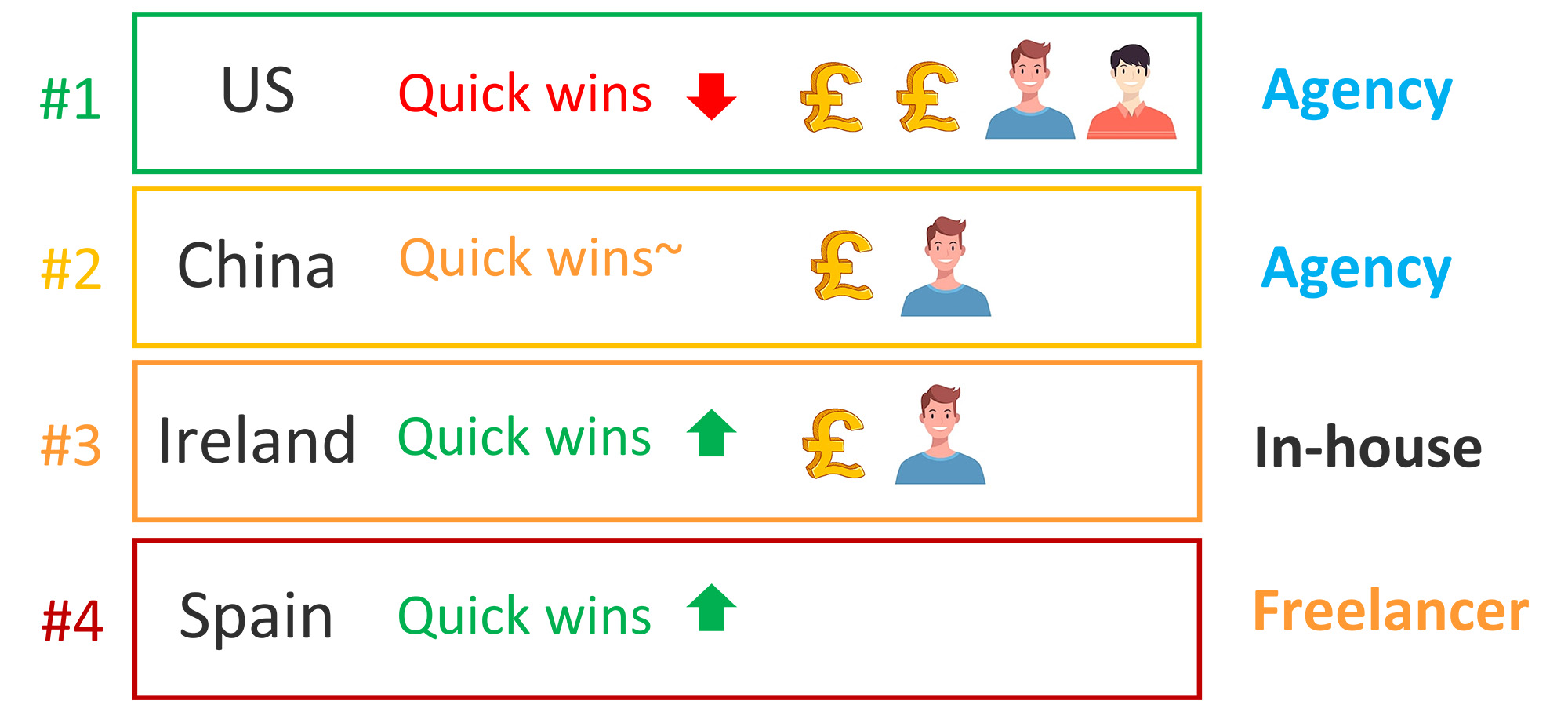
Based on your priority target regions, opportunities, and available resources, pick which resources would work best for which region.
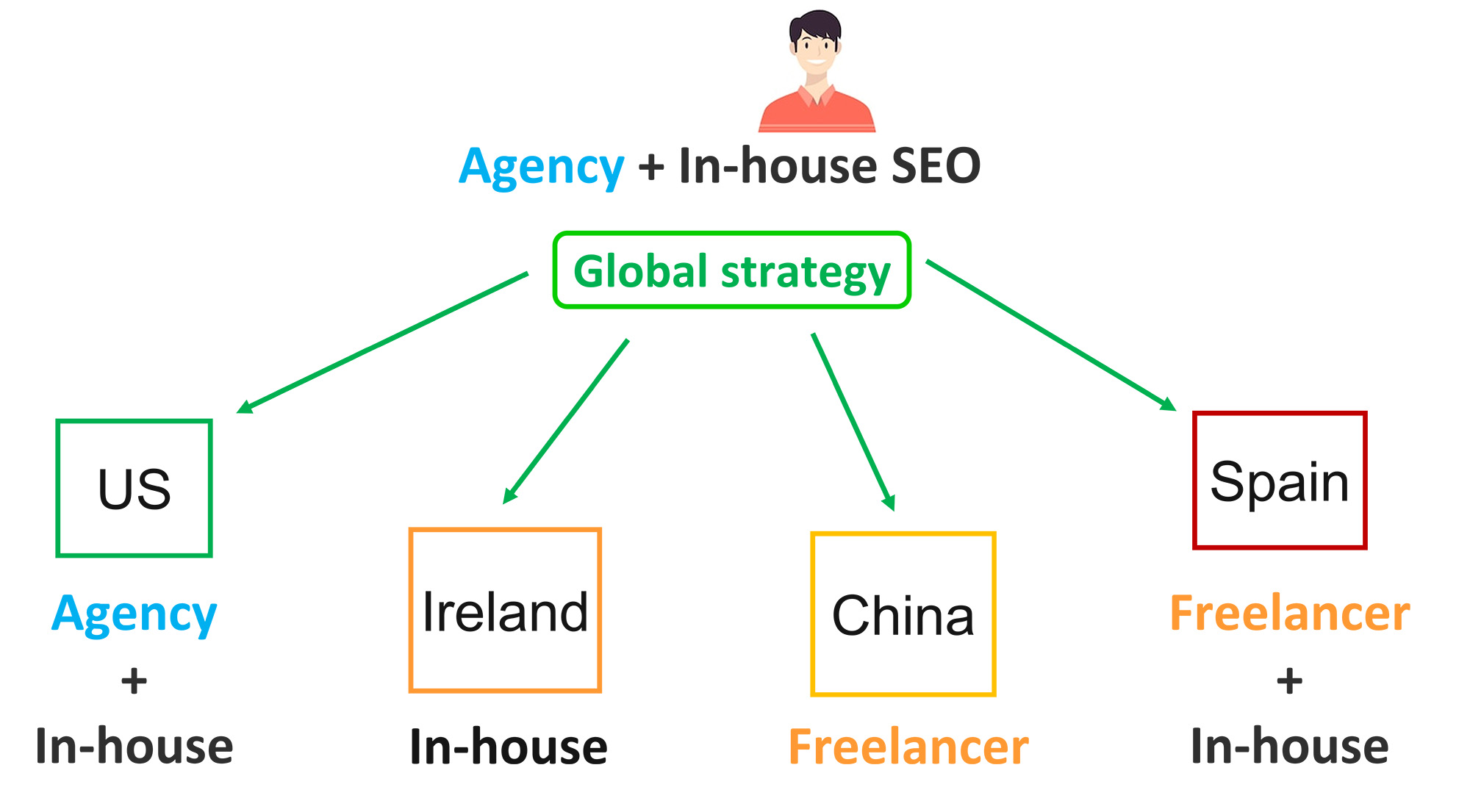
Also, consider using an agency or single freelancer (with experience on global SEO strategies), to create a global strategy with you and cascade this to each country. This way, you combine an informed SEO strategy with capable, local resources to implement them.
Use internal teams/staff to delivery basic SEO tasks
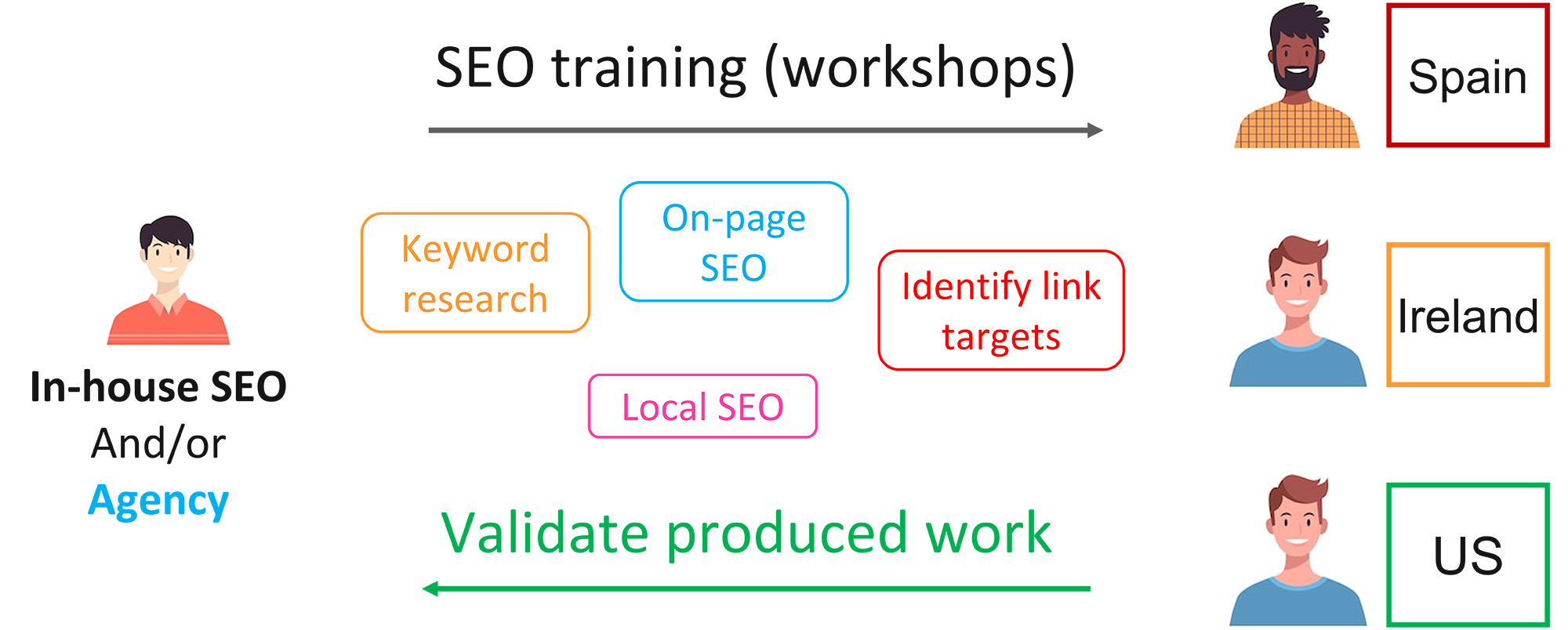
I have leveraged my clients’ industry knowledge and expertise to perform basic SEO tasks, such as:
- Keyword research and localisation
- Content ideation
- Content trans-creation
- Identify link building opportunities
- Basic NAP optimisation
- SERP optimisation
Through some upskilling and SEO workshops, they were taught enough to do these tasks at a basic level, which is fine, because you can validate the SEO side of things (search volumes, keyword placement, and other SEO best practices), and rely on them to cover the local language and industry knowledge aspects.
It’s not perfect, but if you also partner with an agency or freelancer, they can help you validate the work with a limited retainer.
Use AI for basic SEO tasks and validation
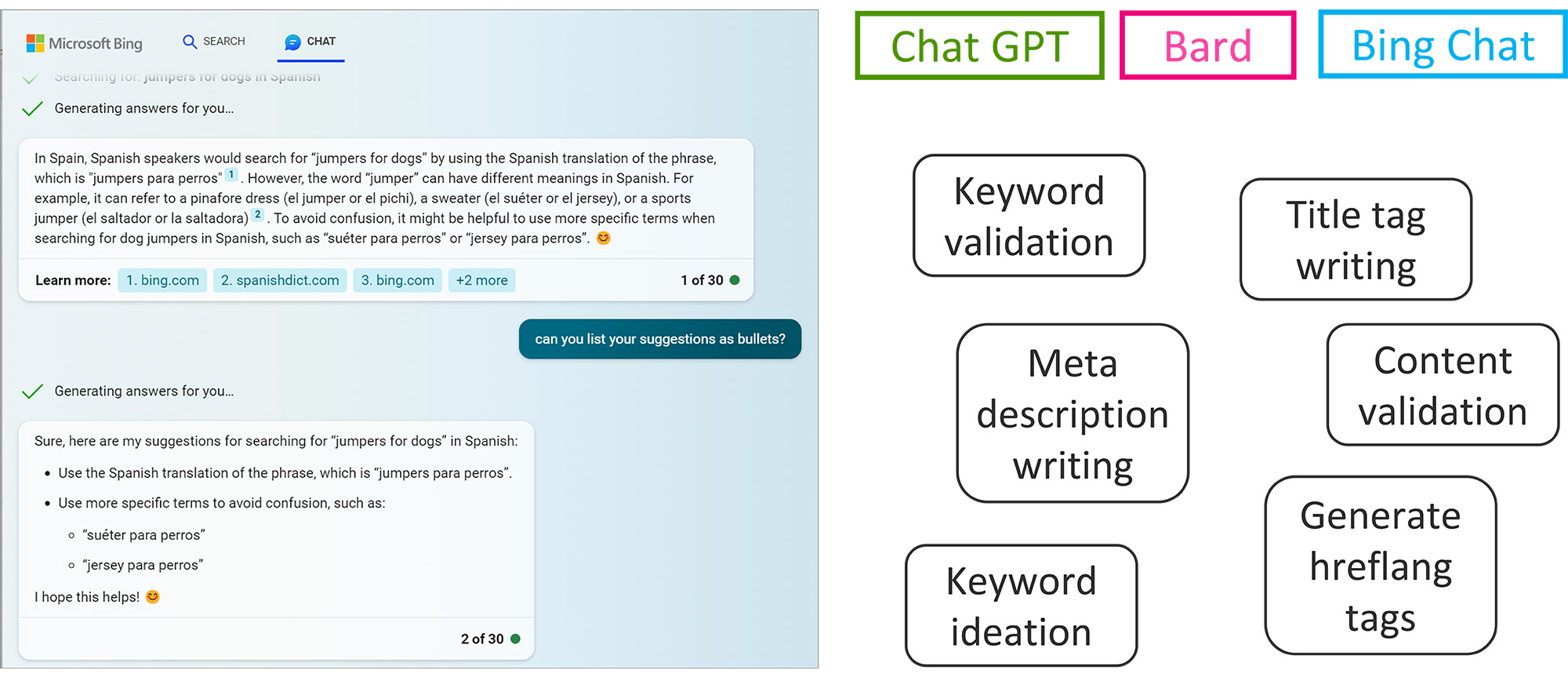
Validate SERP optimisation, keyword and content localisation (with another human!), generate hreflang and schema tags, and generate content ideas. Use AI as a tool combined with the local team’s input, to make the process easier and ensure the data is accurate.
What about low buy-in!?
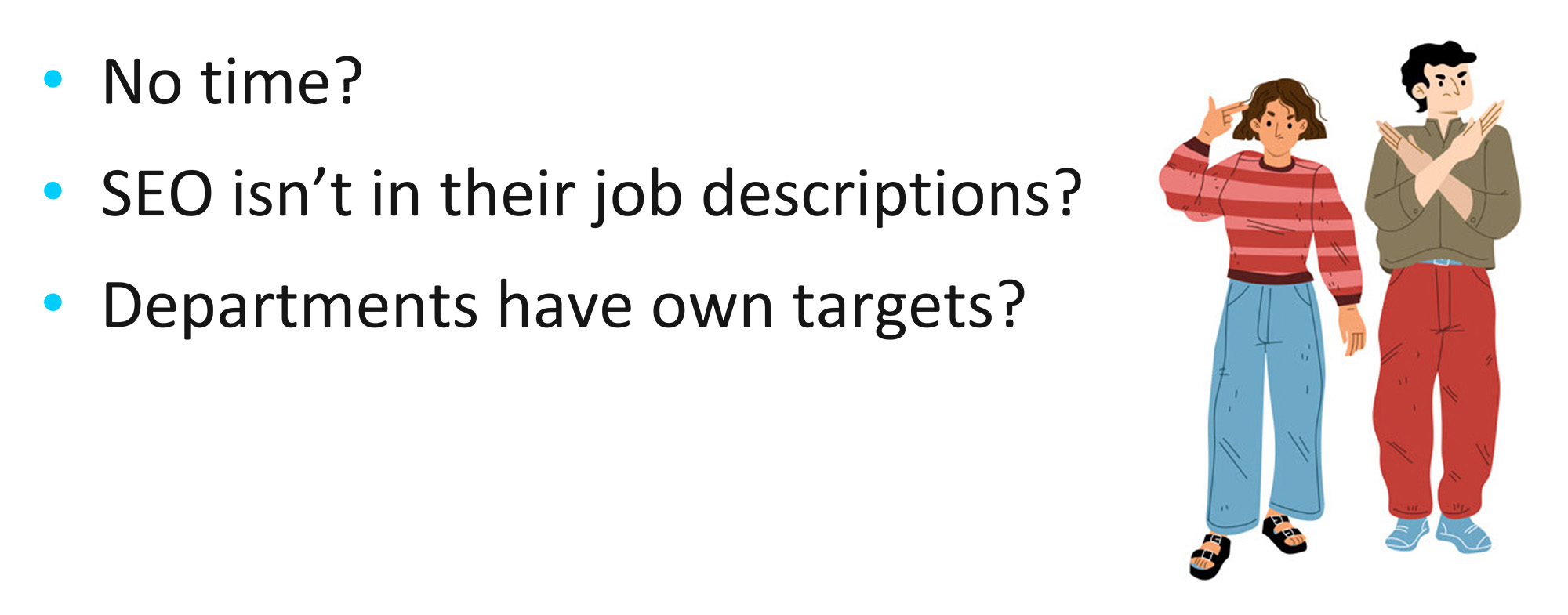
It comes up a lot for SEOs. More so when you’re covering multiple regions and working with multiple stake-holders.
Here are a few methods I have used to overcome low buy-in (and, I am still learning!):
1. Relate Global KPIs to departmental KPIs
When I discussed setting global SEO KPIs at the start and getting buy-in from the CEO and/or global marketing manager (unless that’s you!), this helps to encourage buy-in from other teams and individuals.
As you have buy-in from the top, the next step is to find the targets/priorities of each department and relate them back to the global KPIs, and vice versa. Typically, it’s conversions or revenue, or some micro metric that leads to this, so calculate how much the global KPIs will feed into departmental ones. Highlight the mutually beneficial aspect of this work.
2. Incentivise SEO tasks or KPI milestones with department heads
Find ways to incentivise hitting milestones. Work with department heads and team members to find out what incentives are meaningful to them, and factor these into your budgets.
3. Process and support the work
Create easy processes, tools, and methods of communication, and be responsive to all queries and requests for support (within a reasonable service level agreement). Ideally, anyone delivering work should only worry about delivery.
4. Promote career development
Most staff members I’ve worked with, where SEO isn’t their main responsibility, were open to adding a few more bullets SEO skill points to their LinkedIn profiles and CVs. This bolstered their career prospects inside and outside of the organisation.
This is also a great opportunity to recruit them as authors on their industry topic, benefiting them by building their online profiles in the industry, and contributing towards your E.E.A.T! Win-win!
5. Build relationships and trust!
In my experience, gauging people’s strengths, communication styles, motivations, and overall personally types, is mutually beneficial. I’ve gotten the most out of them, and they from me! Overall, this personal approach has helped me significantly to get buy-in and even test new SEO strategies in regions, where I wouldn’t have been able to do so without additional help from these stakeholders.
Thank you for reading this far and viewing my slides. If you attended Brighton SEO, you will get access to view the recording of this talk via email soon.
Let’s talk!
If you have any questions about my talk, or would like help conquering new markets, view my international SEO service, of feel free to message on LinkedIn or email.
